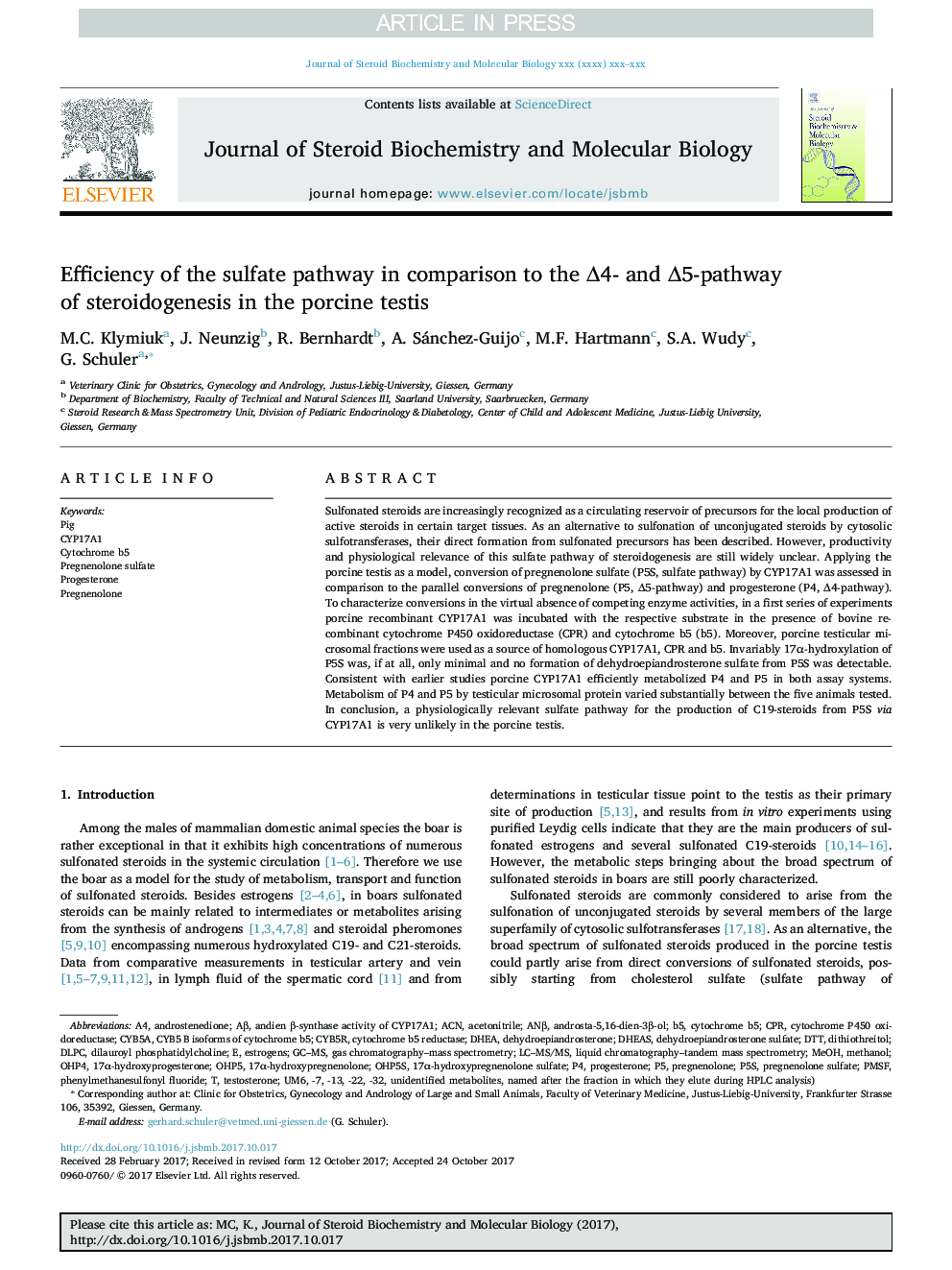| Article ID | Journal | Published Year | Pages | File Type |
|---|---|---|---|---|
| 8337820 | The Journal of Steroid Biochemistry and Molecular Biology | 2018 | 9 Pages |
Abstract
Sulfonated steroids are increasingly recognized as a circulating reservoir of precursors for the local production of active steroids in certain target tissues. As an alternative to sulfonation of unconjugated steroids by cytosolic sulfotransferases, their direct formation from sulfonated precursors has been described. However, productivity and physiological relevance of this sulfate pathway of steroidogenesis are still widely unclear. Applying the porcine testis as a model, conversion of pregnenolone sulfate (P5S, sulfate pathway) by CYP17A1 was assessed in comparison to the parallel conversions of pregnenolone (P5, Î5-pathway) and progesterone (P4, Î4-pathway). To characterize conversions in the virtual absence of competing enzyme activities, in a first series of experiments porcine recombinant CYP17A1 was incubated with the respective substrate in the presence of bovine recombinant cytochrome P450 oxidoreductase (CPR) and cytochrome b5 (b5). Moreover, porcine testicular microsomal fractions were used as a source of homologous CYP17A1, CPR and b5. Invariably 17α-hydroxylation of P5S was, if at all, only minimal and no formation of dehydroepiandrosterone sulfate from P5S was detectable. Consistent with earlier studies porcine CYP17A1 efficiently metabolized P4 and P5 in both assay systems. Metabolism of P4 and P5 by testicular microsomal protein varied substantially between the five animals tested. In conclusion, a physiologically relevant sulfate pathway for the production of C19-steroids from P5S via CYP17A1 is very unlikely in the porcine testis.
Keywords
dehydroepiandrosteronedilauroyl phosphatidylcholine17α-hydroxypregnenoloneDHEACYB5ACytochrome P450 oxidoreductaseDLPCCYP17A1DHEASPMSFDTTAβACN17α-HydroxyprogesteroneGC–MSLC–MS/MSCPREstrogensAcetonitrileandrostenedionetestosteronepregnenolonePigdithiothreitoldehydroepiandrosterone sulfatepregnenolone sulfatecytochrome b5Cytochrome b5 reductasegas chromatography–mass spectrometryPhenylmethanesulfonyl fluorideMethanolMeOHProgesteroneliquid chromatography–tandem mass spectrometry
Related Topics
Life Sciences
Biochemistry, Genetics and Molecular Biology
Biochemistry
Authors
M.C. Klymiuk, J. Neunzig, R. Bernhardt, A. Sánchez-Guijo, M.F. Hartmann, S.A. Wudy, G. Schuler,
